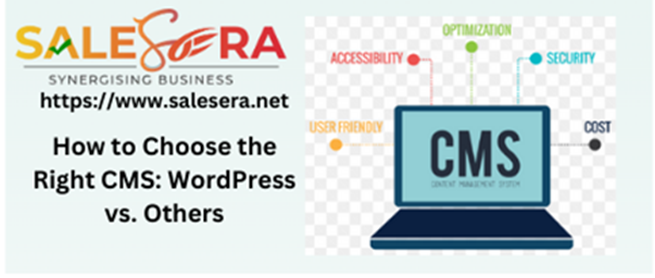In the ever-evolving world of digital marketing, optimizing your website to rank higher on search engine results pages (SERPs) has become crucial. One of the key strategies to achieve this is through the effective use of keywords, meta tags, and header tags. In this blog post, we will delve into the significance of these elements and how they contribute to improving your website’s visibility and attracting more organic traffic.
Search engines may better interpret and index web pages with the aid of keywords, meta tags, and header tags, which are crucial components of SEO (search engine optimization). The uses of each are listed below.
Keywords:
Keywords play a pivotal role in search engine optimization (SEO). They are specific words or phrases that users enter search engines while looking for information. By incorporating relevant keywords into your website’s content, you increase the likelihood of your pages appearing in search results. However, it’s important to strike a balance between using keywords naturally and avoiding keyword stuffing, which can harm your website’s ranking.
Meta Tags:
Meta tags provide additional information about your web page to search engines and website visitors. The two most important meta tags are the title tag and the meta description tag. The title tag appears as the headline in search engine results, while the meta description tag provides a summary of the web page’s content. Crafting compelling and concise meta tags can significantly influence click-through rates and attract more visitors to your site.
Header Tags:
Header tags, also known as H1, H2, H3, etc., are HTML elements that denote the headings and subheadings on a webpage. These tags not only make your content more readable and organized but also provide search engines with a clear structure for your page. Using relevant keywords in header tags can further enhance the visibility of your content, especially when search engines crawl your site.
Best Practices:
To make the most out of keywords, meta tags, and header tags, consider the following best practices:
- Thorough Keyword Research: Conduct comprehensive keyword research to identify high-ranking and relevant keywords that align with your content and target audience.
- Strategic Keyword Placement: Incorporate keywords naturally into your website’s content, including headings, paragraphs, and image alt tags. This helps search engines understand the context of your page.
- Unique and Compelling Meta Tags: Craft unique and compelling meta tags that accurately describe your content and entice users to click on your website in search results.
- Consistent Header Tag Structure: Maintain a consistent and logical structure for your header tags, using H1 for the main heading and subsequent tags for subheadings. Include relevant keywords in your headers to improve visibility.
It’s crucial to keep in mind that while header and meta tags can affect search engine rankings, they are only one component of SEO. In addition, other elements like good content, backlinks, site speed, and user experience are very important to SEO success.
Keep in mind to prevent keyword stuffing and employ important terms naturally. Additionally, for improved user experience and search engine exposure, make sure that the header tags and meta descriptions appropriately represent the content of the page.
A Step-by-Step Guide on Adding Meta Tags to Your Website

Meta tags play a crucial role in improving a website’s visibility and performance on search engine result pages. By including relevant and optimized meta tags, website owners can enhance their website’s search engine optimization (SEO), attract more organic traffic, and improve overall user experience
- Understand the Importance of Meta Tags:
Before diving into the process of adding meta tags, it is essential to understand their significance. Meta tags are snippets of HTML code that provide information about a web page to search engines and website visitors. They help search engines understand the content and purpose of each page, ultimately improving its visibility.
- Identify the Meta Tags You Need:
There are various types of meta tags that serve different purposes. The most common ones include the title tag, meta description tag, and meta keywords tag. It is crucial to identify which meta tags are most relevant to your website’s content and goals.
- Open the HTML File:
To add meta tags to your website, you will need access to the HTML file of each page. Open the HTML file in a text editor or an HTML editor of your choice.
- Locate the Head Section:
- Add the Title Tag:
The title tag is one of the most important meta tags as it appears as the title of your web page in search engine results. To add a title tag, insert the following code within the <head> section:
“`HTML
<title>Your Page Title Here</title>
“`
- Insert the Meta Description Tag:
The meta description tag provides a summary of your web page’s content. It appears as a snippet below the title in search engine results. To add a meta description tag, insert the following code within the <head> section:
“`HTML
<meta name=”description” content=”Your page description here”>
“`
- Include the Meta Keywords Tag (Optional):
Although the meta keywords tag is not as influential as it once was in SEO, some search engines still consider it. To add a meta keywords tag, insert the following code within the <head> section:
“`html
<meta name=”keywords” content=”keyword1, keyword2, keyword3″>
“`
- Save and Publish:
Once you have added the desired meta tags to your HTML file, save the changes and publish the updated file to your website. Ensure that the changes are reflected on all the relevant pages.
Conclusion:
In today’s competitive digital landscape, understanding and utilizing keywords, meta tags, and header tags are essential for effective website optimization. By incorporating relevant keywords naturally, crafting compelling meta tags, and maintaining a consistent header tag structure, you can enhance your website’s visibility, attract more organic traffic, and ultimately improve your search engine rankings. Remember, optimizing these elements is an ongoing process, and staying up to date with the latest SEO practices is crucial for long-term success.
By following these simple steps, you can effectively add meta tags to your website and improve its visibility on search engine result pages. Remember to regularly review and update your meta tags to align with changes in your website’s content and SEO strategies. Implementing well-crafted meta tags will contribute significantly to driving organic traffic and improving user experience on your website. Don’t forget to follow our company salesera social media pages for high-quality business growth content and watch educational and informative content on our YouTube page.














